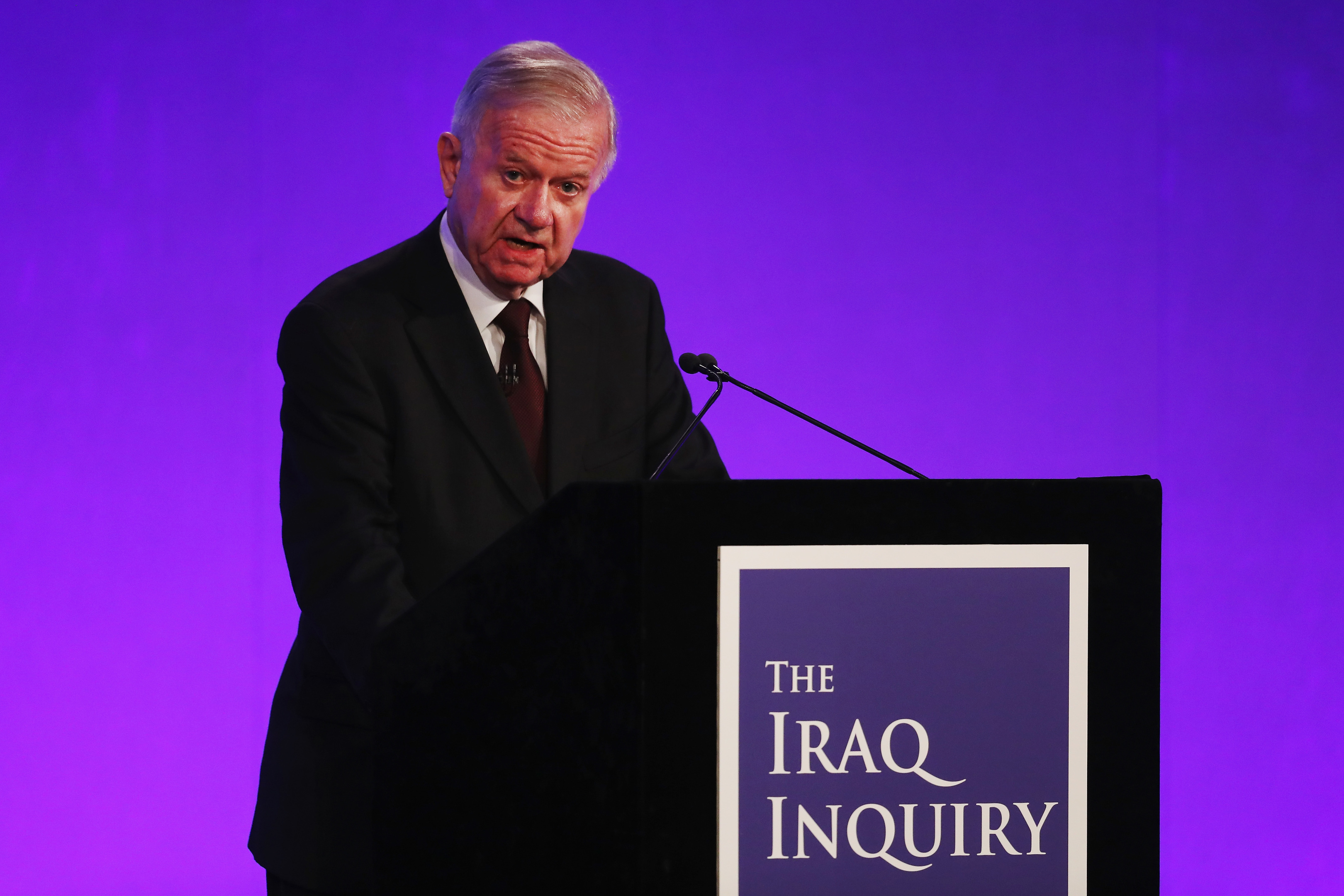
TONY BLAIR privately assured George Bush eight months before the invasion of Iraq that he would be with the US president “whatever” when it came to dealing with Saddam Hussein, the Chilcot Inquiry has disclosed.
In a six-page memorandum to Mr Bush, marked Secret Personal, Mr Blair argued that toppling the Iraqi dictator was “the right thing to do” and that the crucial issue was “not when, but how”.
The document – dated July 28, 2002 – is among 29 letters and notes sent by Mr Blair to Mr Bush between 2001 and 2007 to be released by the inquiry.
In it, the prime minister set out a strategy for presenting Saddam with an ultimatum demanding he admitted United Nations weapons inspectors back into Iraq in the expectation that he would “screw up”, providing a cause for war.
“I will be with you whatever. But this is the moment to assess bluntly the difficulties. The planning on this and the strategy are the toughest yet. This is not Kosovo. This is not Afghanistan. It is not even the Gulf War,” he wrote.
Mr Blair frankly admitted that he could not be sure of support in Britain for his plan – even among members of his own government – while public opinion elsewhere in the world was likely to be strongly opposed.
“If we win quickly, everyone will be our friend. If we don’t and they haven’t been bound in beforehand, recriminations will start fast,” he wrote.
He went on: “And – and here is my real point – public opinion is public opinion. And opinion in the US is quite simply on a different planet from opinion here in Europe or in the Arab world.
“In Britain right now I couldn’t be sure of support from Parliament, Party, public or even some of the Cabinet. And this is Britain. In Europe generally, people just don’t have the same sense of urgency post 9/11 as people in the US.”
READ MORE
Chilcot Report: Blair rushed ill-prepared troops to war with no imminent threat
Chilcot Report: The key points at a glance
Mr Blair acknowledged that there would be “reluctance” in the US about taking the issue to the UN Security Council, but insisted it was the best way to provide them with a legitimate case for military action.
“We don’t want to be mucked around by Saddam over this, and the danger is he drags us into negotiation. But we need, as with Afghanistan and the ultimatum to the Taliban, to encapsulate our casus belli in some defining way,” he wrote.
“This is certainly the simplest. We could, in October, state that he must let the inspectors back in unconditionally and do so now, i.e. set a 7-day deadline.
“There would be no negotiation. There would be no new talks with (UN Secretary General Kofi) Annan. It would be take it or leave it.
“I know there will be reluctance on this. But it would neutralise opposition around the UN issue. If he did say yes, we continue the build-up and we send teams over and the moment he obstructs, we say: he’s back to his games.
“That’s it. In any event, he would probably screw it up and not meet the deadline, and if he came forward after the deadline, we would just refuse to deal.”
The prime minister emphasised the importance of presenting the evidence about Saddam’s supposed weapons of mass destruction (WMD) as well as trying to establish a link with al Qaida in the aftermath of the 9/11 attacks on the Twin Towers in New York the previous year – although none was ever found.
“If we recapitulate all the WMD evidence; add his attempts to secure nuclear capability; and, as seems possible, add on Al Qaida link, it will be hugely persuasive over here,” he wrote.
He also stressed the need for renewed “focus and effort” in Afghanistan, which British and US troops had invaded the previous year, ahead of any operation against Iraq.
“We need this to be going right, not wrong. It is our one act of regime change so far, so it better be a good advertisement,” he said.
Mr Blair went on: “I would be happy to try to put all this together…. But it needs a huge commitment in time and energy. So it’s only really worth doing if we are all on the same page.”
He concluded: “On timing, we could start up after the (summer) break. A strike date could be Jan/Feb next year. But the crucial issue is not when, but how.”

Enjoy the convenience of having The Sunday Post delivered as a digital ePaper straight to your smartphone, tablet or computer.
Subscribe for only £5.49 a month and enjoy all the benefits of the printed paper as a digital replica.
Subscribe